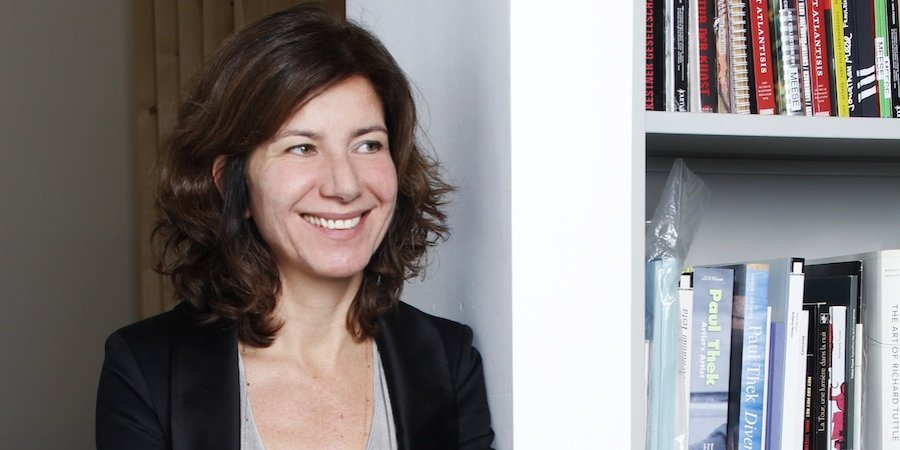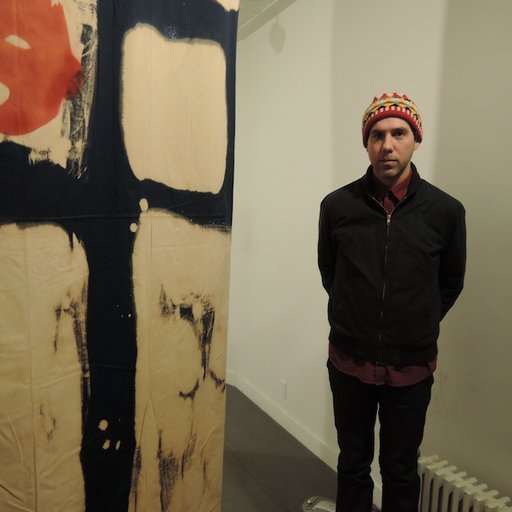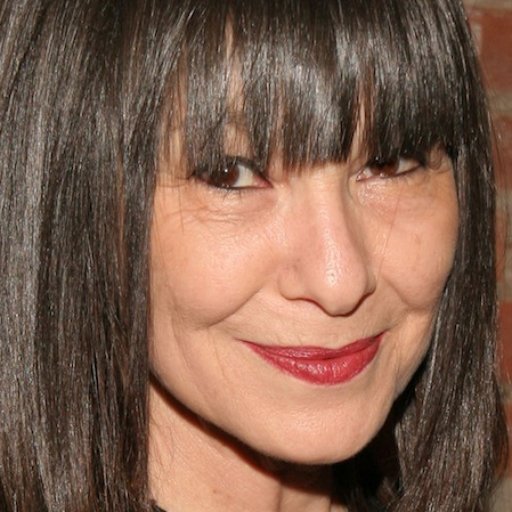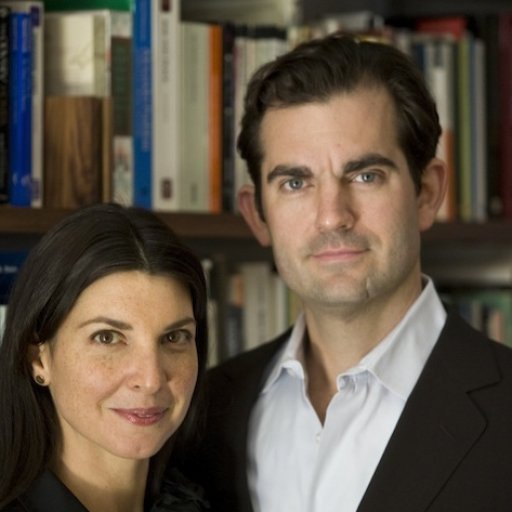A widely respected tastemaker in the contemporary art scene, the New York dealer Stefania Bortolami cut her teeth with Anthony d'Offay, a legendary London dealer known for his connoisseurial eye in both art—after closing his gallery in 2001, he donated his $140 million collection to the Tate and the National Galleries of Scotland—and in budding star gallerists. Moving afterwards to Gagosian Gallery, where she rose to be the megadealer's second-in-command, she then opened a very different space of her own to champion a group of highly dedicated emerging and established artists.
To find out more about her exceptional approach to running her gallery, Artspace editor-in-chief Andrew M. Goldstein spoke to Bortolami about how she identifies rising stars in the making—and then ensures that their careers don't suddenly flame out.
You were born in Rome and spend your formative years in Italy, where there is obviously a tremendously rich artistic tradition but little contemporary art. How did you first get drawn to recent art?
I studied art history in Torino, and, yes, in Italy you really study the Old Masters—there is no such thing as contemporary art. And there is something beautiful about studying the Old Masters, because time already made the selection of the best work, and you are just looking at one great painting after another. But there is nothing to do, because time already made the selection, and all the paintings are in the museums—you can study the significance of the position of a hand in one painting rather than another, but that’s not particularly dynamic work.
After that I went to London and I took postgrad courses in contemporary art at the Sotheby’s Institute, and that’s when I realized that contemporary art is much more fun, because you get to be part of the time that tells, you know? Whatever your role is—whether you are a critic, or a curator, or a dealer—you are part of this machine that helps make the selection of the art of the day that matters.
You then quickly had the opportunity to do that, since after Sotheby’s you went to work for the legendary London dealer Anthony d’Offay. What was that like?
Fantastic. He was like his own Sotheby’s program for dealers. There was a 9 o’clock meeting everyday for an hour in which literally everything was discussed, from the concept of a show to prices to which collectors should offer the works to whether there should be a catalogue and if so whether it should have a hard cover or soft cover, what either option would convey about the show being big-money or low-key. I mean, everything was discussed—it was essentially five hours a week of art-dealer studies. Which was a lot, if you think about it, because you we did this from 9 to 10 a.m. and then worked about 10 hours more, and we used to work six days a week.
These days it’s hard to even manage to convince people to arrive on time at 10 a.m., and the fact is that I don’t want to do the 9 o’clock meeting because then I’d have to be there too. But Anthony was quite the commander because he was there from 9 a.m. to 7, 8 p.m. every day. Then there were dinners—each employee would go for dinner with Anthony, sometimes in little groups, sometimes one-on-one, at least once a week. So, I don’t think he had any life outside of the gallery, and money was the last consideration in any of it—though of course he made plenty of money. It was all very complicated psychologically.
So many famous art dealers spent time working at that gallery at one point in their career or another. It’s astonishing.
Yes, Sadie Coles, Simon Lee, Lorcan O’Neill, Matthew Marks, Gavin Brown, Tanya Bonakdar, Peter Freeman, James Cohan, Dominique Levy, Mark Fletcher, and myself. We can go on and on. And it’s amazing how many of these people not only have their own galleries but have galleries that show at Art Basel, which only selects the top galleries.
After working for d’Offay, you then went to work at a very different gallery, Gagosian. How did that transition come about?
What I was doing at Anthony d’Offay was bringing on new artists, and that was what I was recruited to do at Gagosian. I brought on artists like John Currin, Mike Kelley, and Jeff Koons, whom I had been working with at Anthony d’Offay, and, because I was the person who was taking care of the artists, the sales would go through me—and because Larry gives commission that meant I made very good money. But, I never worked primarily in sales. To this day I much prefer to spend time with artists rather than collectors, which can be a problem from the bottom line. But it is not a problem in the long run.
What was it like working there?
Larry was expanding. It was not the monster gallery that it is now, in terms of scale, but he was expanding its financial capabilities because there were a lot of artists who needed that kind of machine at the time. Now the machines have gotten so big that they have started giving enormous spaces and budgets to artists who don’t really need that kind of machine, and the artists sometimes suffer as a result. With people like Richard Prince, Mike Kelley, or Paul McCarthy, their style was already set, they had already done their best work, and this was an opportunity to finally make some money. Sometimes the artist hadn’t sold anything, really, until they were 50, so in that case, please go ahead, remake works in your vocabulary, make hundreds of them, rubber-stamp them, they deserve it. What artist don’t deserve is to get out of college and start making millions of dollars, because then they are gone in five years. The problem is that these machines have gotten so big that they need continuous fuel, and that’s just so many artists.
How was Gagosian different from d’Offay in terms of their operations?
Well, the drive at Anthony d’Offay was really to be a great gallery and to do great shows, but was more of a psychological need for greatness that came through Anthony. With Larry, on the other hand, things were very simple, very straightforward, very honest: “I want to do great shows and make lots of money.” [Laughs]. I really appreciated from the beginning that Larry had a very healthy attitude with spending money and having fun with it. With Anthony d’Offay, we would sometimes travel business class but many times we would fly economy. We stayed in nice hotels, but not the Ritz or the Dorchester. When I joined Gagosian, my first trip was when we were both in London and he offered to bring me back to New York on his private plane, and I was like, “Okay.” Hello America! I loved it.
In 2005, you left Gagosian to found your own gallery with the dealer Amalia Dayan, which you opened with the deliciously ironic debut show “Closing Down.” What made you want to start your own gallery?
Well, I was nearing forty and I had the top position at Gagosian, which was a top gallery. So where do you go from there? Clearly, if I had stayed, I would have been a lot richer than I am now in terms of money, but I was thinking of what I wanted for my life personally. Then Adam Lindemann [the collector, owner of Venus Over Manhattan gallery, and now husband of Amalia Dayan] approached Amalia and I and said, “Why don’t you guys open a gallery and I will be your backer.” And we said, ‘No,’ because I didn’t especially want a backer, but Amalia and I then looked at each other and said, “Why don’t we do it ourselves?” Then they got married, and although he was not a backer and didn’t give us any financial support, there was a lot of impetus coming from him—you can’t beat pillow talk, it always wins. [Laughs]. So the idea became to try to make a gallery that competes with the top galleries and tries to get the biggest artists.
That’s clearly not the way the gallery operates today.
The thinking was that we had the Gagosian clients and I could go get the artists, and then there you go. And at that time, if you remember, Perry Rubenstein opened a gallery and Stellan Holm opened a gallery, and all these people with big clients thought, “Of course, Larry got it right, all we have to do is open a gallery and then get artists and we’ll become Larry Gagosian too,” which clearly did not work for either Perry or Stellan. And I didn’t really believe in stealing an artist and bringing them to this new gallery, because god knows what would happen—it was different from, you know, stealing John Currin from Andrea Rosen to bring him into a structure at Gagosian that was good for John. So we struggled with that for a little while, because that was not really what I wanted to do and the compromises we had to make became too big. Then we finally split up very amicably after two years, and Amalia opened a totally different type of gallery [Luxembourg & Dayan on the Upper East Side, with Daniella Luxembourg].
Now the only artist in your roster who is an internationally famous artist of the kind Gagosian works with is Daniel Buren.
Yes, but we also work with Piero Golia, a conceptual artist who shows with Gagosian in Los Angeles and Paris even though he is a totally non-Gagosian kind of artist—but that is what Larry should do now. He should get quirky, weird artists, not very commercial artists like Sam Falls and Ryan Sullivan and people like that, because that really would give the wrong message. But when there’s anything that sells for more than $100,000, Larry gets interested. We also just stopped working with Aaron Young, who has shown with Gagosian. But the gallery is going in a different direction.
What’s remarkable about your program is that it’s truly avant-garde and challenging, with artists like Ben Schumacher and Richard Aldrich taking a very experimental conceptual approach to traditional mediums like sculpture and painting, and Anna Ostoya doing the same thing with photography. How would you define the unifying vision behind the gallery?
I really enjoy the diversity, actually, and the fact that it’s multigenerational, starting with the very young [29-year-old] Ben Schumacher—and now we are very much going after another artist who is 30 years old—and going all the way to quite a few older ones, like Daniel Buren, Morgan Fisher, and Barbara Kasten. There is an artist almost for every decade, so I like that, and I like the fact that, while the artists don’t follow a specific type, they do share a certain formalism—but then you have Jonathan Meese, who is not a formal artist at all. There is an almost monochromatic color to a lot of the work in the gallery, though, and sometimes I realize, “Oh my god, there are so many gray things.” But then there’s Gary Webb—there’s always someone who is a little bit different. I suppose they are all just artists that I like.
How do you choose the artists who you show?
I’ve found that in every group of artists there is always a leader. So for me, the fun is trying to identify the leader, and work with them. To think about the abstract artists of Richard Aldrich’s generation, like Zak Prekop, these are all his friends, actually. The one we started working with was Rich, and I’m very happy with that decision. He’s definitely an analog artist, so he does his explorations in the old-fashioned way. What I like about Rich very much is his apparent disdain of the market. We sell a lot, and we sell very well, but considering the amount of museum shows he has had and the amount of press attention and scholarly attention he gets from very highbrow curators, if he worked in series and satisfied the market with those beautiful lyrical abstract paintings rather than with the more difficult paintings he likes to make, he would sell a lot more. Then the commercial attention would be on par with the curatorial attention, but it isn’t. We’ve sold his paintings at $50,000 apiece, but if he decided, “Oh, I want to make money now,” we could sell them at $100,000 if they were more commercial types, but he is not that kind of artist. He really wants to wear his freedom and he is not going to make any compromises to satisfy a market or an appetite for a certain type of art. He always will try new things and really push the limit.
Not all dealers would view that approach so positively—there are plenty who would be far happier to double the prices early on.
I don’t because I know that that’s how you go for the long term. I mean, the cycles are getting so fast in the art world. Have you noticed? Some artists who you hadn’t heard of until three years ago and then became successful overnight went from $20,000 to $500,000, and now you can’t sell their work. It’s too fast, it’s too fast. I like to go slower, and I will still be talking about Richard Aldrich 10 years from now. So that’s why I am happy.
What about Ben Schumacher, a very young artist who is also very experimental—how did you come across him?
David Rimanelli [the art critic and curator who teaches at New York University], who had never, ever told me to look at an artist, told me that this is the smartest student he has ever had. I thought, “Okay, I’ll go for that.” We’re very close friends, and he usually is very hard on his students. So I went with Christine [Messineo, the gallery’s director and artist liaison] to the studio—Christine is very good and knows a lot of young artists—and it was an aesthetic I had never seen before. He had these Ikea lamps wrapped in leather, and he had these glass sculptures, and I was like, “Oh, god.” You know, we see a lot of art, and the aesthetic was totally new.
Because your program is so innovative and the artists are so different, is it difficult to make confident decisions about which artists to bring on?
You never make confident decisions—you have a hunch, and you try it out. Ben is very close friends with Hugh Scott-Douglas, and after I met Ben there was quite a bit of pressure to show Hugh as well, but I decided not to do it. It was commercially the wrong decision—his paintings are a lot more expensive, and everyone wants them. But, again, I feel that I will be surprised by Ben for a long time to come. And people don’t come to me for things that will go up in value within, you know, three months.
That leads to the question of your collectors—how would you describe the kind of collectors who gravitate to your program? And what kind of collectors do you find yourself drawn to?
Again, it’s really a mix—it’s international, and it’s not the Gagosian type of collector. Though, to be fair, we have sold to a fair amount of speculators, and Ben has the attention of some of these, but I think once you start doing all the big fairs you really get everyone. The people that buy the most from the gallery are collectors who have a longer vision, though, because if your intention is to buy something and sell it the year after for three times the price, this is not the right gallery for you. And we look at their track records.
Who, in your view, is the ideal collector?
The one who buys a lot from my gallery. [Laughs] I have nothing against selling—it’s the way I started a gallery and bought an apartment, everything has been through selling art. I do believe in collectors buying and selling when needed. But, when needed—not as a job. The collectors who make their living buying and selling art, it’s not honest. It’s not an honest way of presenting yourself, and people get so upset. But, at the same time, you’ll never be able to buy so much art if you don’t sell some things, and it’s what makes the world go around a little bit, you know. Also, there is so much art that is being produced right now—when you walked around Chelsea after Hurricane Sandy, every gallery had so much ruined art in garbage containers outside. We shouldn’t be so precious about it. And, frankly, what we show all over the world of the art made in 2013 and 2014 by artists who are under the age of 50, 99.9 percent of it is going to disappear.
It goes back to those Old Masters museums in Italy—the selection of the greatest artists who will last takes place over time, and it is not merciful.
Yes, time will tell. So I’m don’t completely believe the sort of preciousness that one is suppose to buy art and keep it forever. People take the position that the collector should never sell, but if they never sell then at one point they have to stop collecting. So, which do you prefer?
Where are you looking now for new talent? What are the new emerging currents that have caught your attention? Are you looking at digital art, for instance?
The main thing is, you can’t go after the latest hot artist. Because that, I think, is the death of a gallery. There’s too much trendiness. But speaking of digital, I have been making some studio visits with artists who are working with that, and I will continue. I just employed someone who used to work at Murray Guy, Jacob King, and he writes about art and he is friends with all these artists. It’s a whole group that all know each other, and I will try to go and see all of them and see if we get to a consensus about which is the one to pick. Ben is part of that discourse as well, he was the centerpiece of “Love of Technology,” the first show that Alex Gartenfeld did in Miami, and some of these other guys were there too. I mean, that’s clearly the next generation, and they are not a flash in the pan yet, in the sense that they are not even yet a flash. The market has not looked at them yet.
Because all these considerations are for the most part beyond the abilities and reference points of most people who collect art, it can be difficult for someone who is not an art professional to navigate the emerging landscape. If someone came to your gallery and said they were interested in just starting to collect art, what kind of advice would you give them?
Oh god, you know—they all end up having fun one night, sitting next to the latest art star at a dinner and getting a little drunk and then they’ll start collecting them. Then, when that art star isn’t so much of a star anymore, then they will look at art in a different way, looking at things a bit more closely. So my advice would be to collect with the eyes not with the ears. But that’s not easy—we all have ears. That’s why I must say I am a champion of art advisors, especially the good ones, because otherwise you get pulled by the latest, flashiest thing.
























